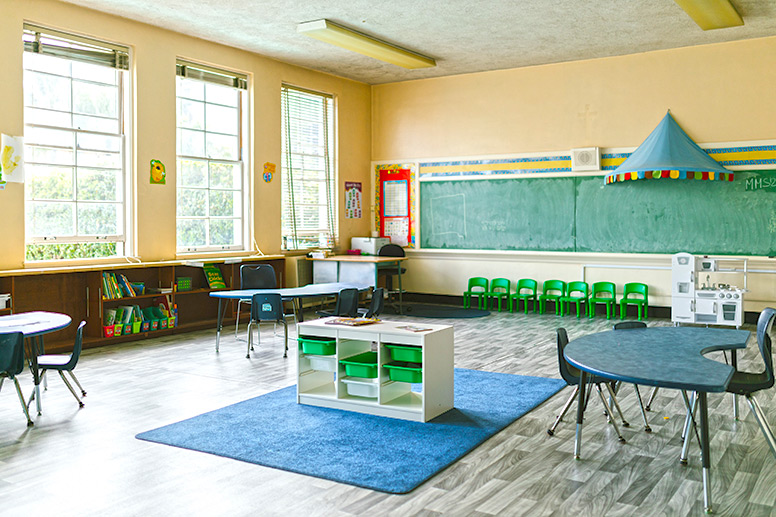
Designing Classrooms Differently to Encourage Collaboration
The ever-changing and fast-paced education environment requires a greater concentration on the needs of learning of students. However, many classrooms feature traditional fixed elements, such as an enormous teacher's desk in the centre of the room and rows of desks for students - filling up spaces designed specifically for teachers or specific subjects.
As pedagogies change and collaboration is an essential element for the professional learning community, school districts need to collaborate with architects to develop new solutions that improve the learning environment, so they don't have to be tied to a particular subject or teacher; they become places which support a variety of modes of learning.
Collaboration among and between staff and students is vital for 21st-century learning since it helps ensure mutual accountability. Since there is no one in the group, educators can maximize cohesion in the activity and group. This model helps to foster the development of flexibility, creativity, and the constant sharing of the most effective practices.
It also incorporates the concept of taking risks in the intellectual sense, which is an essential element that every student needs to understand to compete in the rapidly evolving world of tomorrow.

Collaboration requires space and structure to facilitate it.
The notion that teachers each "own" a space is detrimental to the finishing result. A space for learning that is dynamic has to be centred around the student and be able to adapt to any arrangement that encourages collaboration, especially when curricula shift. For instance, schools are increasingly having departments collaborate on group projects.
An English and Theater Department may collaborate to work on a project centred around Hamlet, for instance, or an English, Math, and Science Department could collaborate on a project about Hamlet. The Math, English, and Science Department could work on an aquaponics project.
With open spaces that are adaptive and collaboration zones, as well as dynamic labs for science and innovation, the high and middle schools we're creating are now shaped and appear more like colleges and Silicon Valley offices than schools.
There's a good reason for this. Making spaces designed for a specific kind of experience, not just an individual teacher or subject, will let schools create more engaging experiences by creating spaces that can be more welcoming, engaging, fascinating, and interesting.
Teachers are in charge of their classrooms.
Teachers will often have hours in the day when the room isn't being used to its fullest. If schools are designed to function more like an academic campus and allow teachers to have the ability to secure their space in a collaboration room, every classroom can be loaded throughout the day as teachers are moved to different rooms to instruct.
With classrooms that are designed for flexibility of a classroom, teachers can instruct a math class in a flex-science laboratory, and an English teacher could teach in the same area which is being used for a Social Studies class.
The best way to save money is to build smaller classrooms yet be able to accommodate the space requirements needed to meet the educational demands. By identifying the multiple uses of space, architects can cut down on the number of rooms constructed, resulting in cost savings for schools.
When fewer classrooms are required, and less space is needed to be built. This means a building that uses less energy to maintain spaces and, in turn, requires less maintenance. This means that more resources can be used to install more windows for increased security and visibility as well as more furniture for collaboration as well as more durable and attractive finishes, and more sustainable facilities throughout the campus.

Teachers also require spaces to work and collaborate.
Through the allocation of rooms across the campus where groups of teachers regularly meet and work, real collaboration will naturally occur.
As the teaching process continues to shift towards the development of new skills, not knowledge of the subject, it is no longer acceptable to place students and teachers in environments that aren't flexible. Instead, let's let them open their worlds and provide them with an environment that allows them access to external resources and opportunities to connect with the world outside.
Making spaces that permit these kinds of things must be our primary goal in the future so that the future generation can thrive and grow according to their educational goals.
About the Author: Joe Eckel
After more than 25 years of helping students through their dissertations and theses with complete attention to detail, Joe Eckel is currently sharing his knowledge through StudyCrumb. As a research paper helper, he ensures that every student receives valuable insights into writing A-grade academic papers.











COMMENTS
Ultimately, the goal should be to create environments that support the development of new skills and provide students and teachers with access to external resources and opportunities to connect with the wider world. By prioritizing the creation of spaces that enable these experiences, we can help future generations thrive and achieve their educational goals.